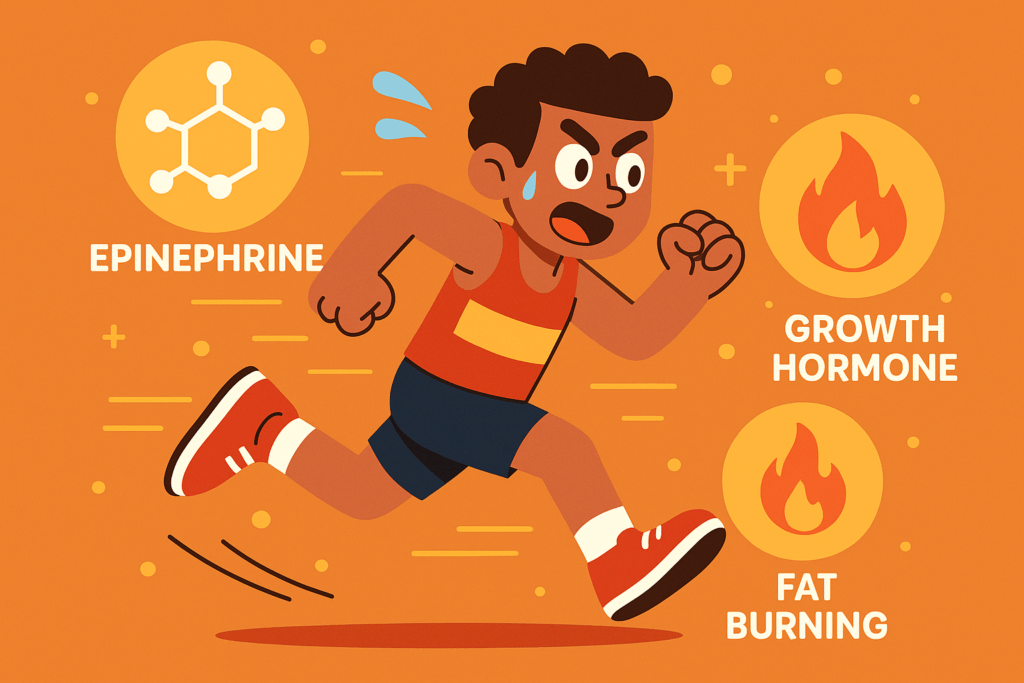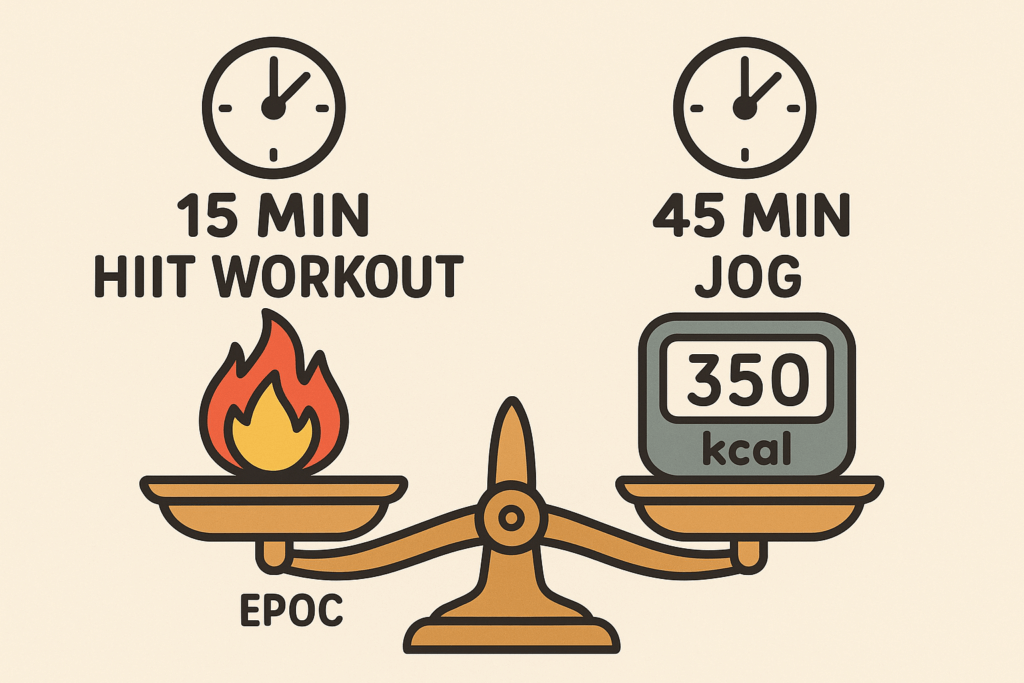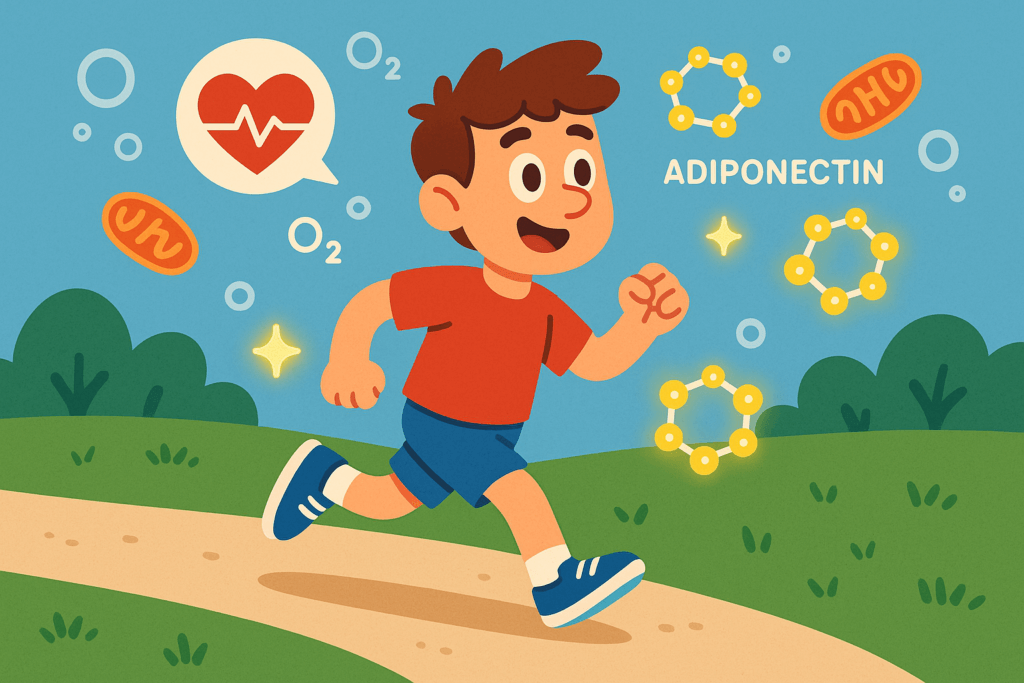When it comes to fitness, fat loss is one of the most common goals. And in that journey, the big debate is always the same: HIIT vs traditional cardio. Should you sweat it out for an hour jogging on the treadmill, or blast through 15 minutes of burpees, sprints, and jump squats? Both methods burn calories, both improve health, but they work in very different ways.
The answer isn’t as simple as “HIIT burns fat faster” or “cardio is safer.” The truth lies in how your body responds at the biochemical level. HIIT spikes hormones like epinephrine, norepinephrine, and growth hormone, creating an “afterburn effect” that keeps you torching calories even while you rest. Traditional cardio, on the other hand, relies on aerobic pathways, stimulating fat oxidation and improving your endurance.
Let’s break down HIIT vs traditional cardio in detail—looking at the science, the hormones, the metabolism, and the real-world results—to figure out which one is truly best for burning fat.
What Exactly is HIIT?
High-Intensity Interval Training (HIIT) is built around the concept of pushing your body close to its maximum effort for short bursts, followed by recovery.
Example HIIT workout:
- 30 seconds sprint → 1-minute walk → repeat for 15 minutes.
What happens inside the body:
- Catecholamine surge: Your adrenal glands release epinephrine and norepinephrine, mobilizing fatty acids from fat cells into the bloodstream for fuel.
- Lactate accumulation: HIIT builds up lactate, which stimulates brain-derived neurotrophic factor (BDNF) and growth hormone (GH)—both of which improve fat metabolism.
- EPOC (Excess Post-Exercise Oxygen Consumption): After HIIT, your body works harder to restore oxygen balance, repair tissues, and clear lactate, which keeps calorie burn elevated for up to 24–48 hours.

HIIT is like “shocking” your metabolism. Even though the workout itself is short, the chemical and hormonal ripple effects last for hours.
What is Traditional Cardio?
Traditional cardio, also called steady-state cardio, involves maintaining a moderate intensity for an extended period. Think jogging, cycling, swimming, or brisk walking.
What happens inside the body:
- Aerobic metabolism: Muscles use oxygen to break down fat and glucose for energy.
- Adiponectin release: A hormone that improves fat metabolism and insulin sensitivity.
- Mitochondrial biogenesis: Over time, cardio increases the number and efficiency of mitochondria—the “power plants” in your cells—making you better at burning fat for fuel.
Steady cardio is sustainable, safe for beginners, and excellent for improving cardiovascular fitness. Unlike HIIT, the calorie burn ends almost immediately after you stop, but its long-term adaptations build endurance and fat oxidation capacity.
HIIT vs Traditional Cardio: Calorie Burn
- HIIT: Burns fewer calories during the workout (a 20-minute HIIT may burn ~250–300 calories). But thanks to EPOC and hormone release, total calorie expenditure may be 30–40% higher in the next 24 hours.
- Cardio: Burns more calories during the session (a 45-minute jog may burn 400–500 calories). But post-exercise calorie burn is minimal.

Verdict: If you measure by calories burned per minute, HIIT wins. If you measure by total calories in one long session, cardio often comes out ahead.
Hormonal Impact: The Fat-Burning Chemistry
HIIT
- Epinephrine & Norepinephrine: Trigger rapid fat mobilization.
- Growth Hormone (GH): Elevated for hours, promoting fat breakdown and muscle preservation.
- Insulin Sensitivity: Improved significantly, meaning your cells handle sugar more efficiently (great for preventing diabetes).
- Testosterone: Short-term boost, especially with sprint and resistance-style HIIT.
Traditional Cardio
- Cortisol: Rises moderately. If cardio is prolonged (>60 minutes), cortisol can become excessive, breaking down muscle.
- Adiponectin: Increased, helping fat metabolism and cardiovascular protection.
- Serotonin: Steady release, improving mood and reducing stress.
Muscle Preservation
- HIIT: Protects muscle mass by stimulating anabolic hormones (GH, testosterone). Sprinters and interval athletes tend to stay lean and muscular.
- Cardio: Excessive steady-state cardio can elevate cortisol, which encourages muscle breakdown and fat storage, especially around the belly. This is why endurance athletes often look lean but not muscular.
Fitness Myths You Need to Stop Believing Right Now
Fat Loss Efficiency
- HIIT: Best for fast fat loss in short time frames. Great for busy people who can’t spend an hour in the gym.
- Cardio: Better for people who prefer longer, less intense sessions and want steady calorie burn without joint strain.

Health Benefits Beyond Fat Loss
- HIIT: Improves VO2 max (aerobic capacity), insulin sensitivity, and metabolic flexibility. Excellent for heart health when done safely.
- Cardio: Reduces resting heart rate, lowers blood pressure, improves mitochondrial density, and reduces stress. Better for mental relaxation.
Real-World Comparisons
- Sprinters vs Marathon Runners: Sprinters (HIIT athletes) are lean, muscular, and powerful. Marathon runners (steady cardio athletes) are lean but often lose significant muscle mass.
- Busy Professionals: HIIT provides maximum results in minimal time.
- Older Adults or Beginners: Traditional cardio is safer and easier to sustain without risk of injury.
Which One Burns Fat Faster?
If we’re talking about speed of fat loss, HIIT wins. Its combination of hormone spikes, afterburn effect, and muscle preservation make it the most efficient method. But if we’re talking about sustainability and long-term endurance, traditional cardio is invaluable.
The best approach? Combine both.
- Do 2–3 sessions of HIIT per week.
- Add 2–3 sessions of steady cardio for endurance and active recovery.
This combination gives you the fat-burning punch of HIIT and the long-term cardiovascular benefits of cardio.
Side Effects and Precautions
- HIIT Risks: High intensity may cause joint stress, injury, or burnout if overdone. Not suitable for complete beginners without conditioning.
- Cardio Risks: Excessive long-duration cardio raises cortisol, increases injury risk (shin splints, runner’s knee), and may stall muscle growth.
Rule: Listen to your body, avoid overtraining, and adjust based on recovery.
FAQs
1. Does HIIT burn more fat than cardio?
Yes, HIIT burns fat faster due to hormone spikes and afterburn effect.
2. Is cardio safer than HIIT?
Yes. Traditional cardio is lower impact and better for beginners or older adults.
3. How many HIIT sessions per week are safe?
2–3 sessions are effective. More may lead to overtraining.
4. Can cardio still help with fat loss?
Yes, especially when paired with calorie control and strength training.
5. Should I do HIIT or cardio first?
If fat loss is your main goal, prioritize HIIT. If building endurance, start with cardio.
Disclaimer
This article is for informational purposes only and is not a substitute for professional medical advice, diagnosis, or treatment. We are not doctors. Always consult your physician or a qualified healthcare provider with any questions you may have regarding a medical condition. Do not rely on online content alone to make decisions about your health.
